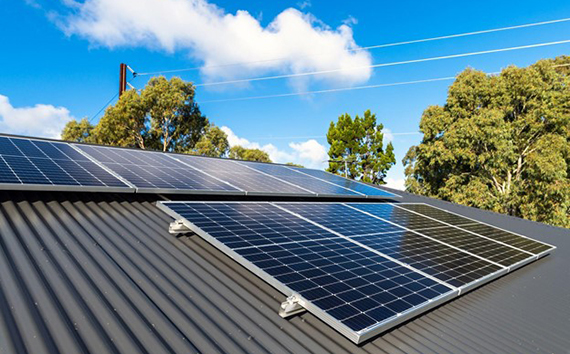Carbon dioxide emissions from electricity generation are a major contributor to global warming and climate change. Much of the world is still reliant on electricity that is created from dirty energy sources. While the world is working to develop renewable and clean methods for electricity production, it is important to understand the state of the global electricity sector today.
In this article, we’ll explore carbon dioxide emissions from electricity generation. We’ll also look at how carbon is emitted when generating electricity and which fuels are the worst for the environment. After that, we’ll view some solutions for optimizing the electricity generation sector and how you can participate in reducing the amount of electricity you use.
Does Electricity Produce Carbon Dioxide Emissions?
Not all electricity is generated from renewable or clean sources. In fact, much of the world’s electricity comes from burning fossil fuels like coal, natural gas, and oil. Today, 63.3% of global electricity relies on sources that emit carbon dioxide and other greenhouse gases (GHGs).
Fossil fuels are burned to power turbines or generators that use heat to turn and create electricity. In 2021, the United States relied on natural gas to create 38% of its electricity, coal to create 22%, and other petroleum products to create around 1%.
The burning of fossil fuels for electricity is one of the primary human activities that contribute to greenhouse gas emissions. Carbon dioxide, nitrous oxide, methane, and other greenhouse gases in the atmosphere lead to global warming and climate change.
While clean electricity is becoming increasingly more available in many nations, much of the energy we use daily comes with a social cost of carbon. Carbon dioxide concentrations in the atmosphere can lead to public health consequences, increases in extreme weather patterns, and food and water shortages.
It is essential to understand the nature of our carbon footprints and where the electricity we use comes from. The more conscious we are of how much carbon dioxide emissions from electricity we are responsible for, the better the planet will be moving forward.
How Much CO2 Is Produced by Electricity Globally?
Global CO2 emissions from electricity and heat are higher than any other sector. In 2018, the world emitted 15.59 billion tonnes of carbon dioxide as a result of electricity and heat alone. For perspective, the second-highest carbon-emitting sector was transportation, which released 8.26 billion tonnes in the same year.
Most of the carbon dioxide emissions from electricity generation are due to coal burning around the world. Coal remains the primary fuel source for electricity generation globally. In 2019, 37% of the world’s electricity was created from burning coal.
Coal emits far more carbon than other fossil fuels that are used to generate electricity. Coal power plants emit 2,249 pounds of CO2 for each megawatt hour of electricity created. For comparison, oil emits 1,672 pounds each megawatt hour, and natural gas emits 1,135 pounds.
Below are the top 10 countries that burned coal for power in 2020, according to energy think-tank Ember. China remains the leading emitter of CO2 from coal burning by a significant margin, having used 53% of the global amount of coal burned for electricity in 2020. Included with the countries listed below is the amount of electricity generated from coal burning in terawatt-hours (TWh) and the percentage of their total electricity made from burning coal.
- China: 4,631 TWh and 61% of total electricity from coal
- India: 947 TWh and 71% of total electricity from coal
- United States: 774 TWh and 19% of total electricity from coal
- Japan: 274 TWh and 29% of total electricity from coal
- South Korea: 192 TWh and 36% of total electricity from coal
- South Africa: 191 TWh and 86% of total electricity from coal
- Indonesia: 168 TWh and 60% of total energy from coal
- Russia: 155 TWh and 15% of total energy from coal
- Vietnam: 141 TWh and 53% of total energy from coal
- Australia: 135 TWh and 54% of total energy from coal
How Do You Calculate Carbon Emissions From Electricity Consumption?
Calculating global emissions from electricity consumption is challenging due to the various forms of electricity generation that are used. For example, the United States uses fossil fuels like coal, oil, and natural gas to generate electricity, but it also uses renewable and clean energy like nuclear, wind, hydropower, solar, biomass, and geothermal. The amount of carbon dioxide emissions from electricity consumption varies depending on where the electricity is being supplied from at a given time.
The way electricity consumption is measured is in kilowatt-hours (kWh), and the amount of carbon dioxide emitted from each kilowatt-hour is estimated by organizations like the U.S. Energy and Information Administration (EIA). The EIA publishes these estimates based on emissions data on a monthly and yearly basis.
How Does Using Electricity Affect the Environment?
Using electricity affects the environment because much of the electricity we use comes from burning fossil fuels. Combusting fossil fuels emits carbon dioxide and other greenhouse gases that cause climate change and global warming. The changes we see our planet going through since the Industrial Revolution have devastating effects on the environment and on human civilization around the world. Let’s take a look at how electricity use affects the environment.
The primary effect electricity use has on the environment is the addition of greenhouse gases to the atmosphere. These greenhouse gases warm the atmosphere and cause the climate to change. The result is increased extreme weather, risks to biodiversity, deforestation, ocean acidification, and desertification. All of these environmental impacts will continue to worsen as we continue to emit carbon dioxide into the atmosphere.
Carbon dioxide emissions from electricity generation also harm humans around the world. Many human establishments face eroding coastlines. Others are confronted with the loss of fertility in the soil and, as a result, reductions in agricultural lands. Still, more have limited access to clean water and face health consequences as a result of climate-change-related air pollution.
For all of these reasons, it is essential that we remain conscious of our electricity use while we remain dependent on fossil fuels for power. Reducing the amount of electricity you use in your home and business can reduce your carbon footprint and have a positive impact on the environment.
How Can We Reduce Carbon Dioxide Emissions in the Electricity Sector?
There is much room for improvement when it comes to reducing CO2 and GHG emissions in the electricity sector. Switching to clean and renewable energy is a great way to reduce the number of greenhouse gases that are emitted due to electricity production. Many of these alternative methods emit very little to no carbon dioxide.
In 2021, the world utilized renewable and clean energy to create 38.26% of its electricity. Below are the alternatives to burning fossil fuels for energy production, along with how much of the global electricity share they are responsible for:
- Hydropower: 15.28%
- Nuclear power: 9.94%
- Wind power: 6.59%
- Solar power: 3.72%
- Other: 2.73%
Another solution for decarbonizing the electricity sector is to improve the efficiency of transporting and using energy. Improving these aspects of the electricity sector will reduce the carbon footprint of electricity and prepare the world for a transition to clean energy. Plus, the optimization of the electricity grid will improve electricity security for the world.
Finally, the storage of electricity must improve in order to increase the efficiency of the electricity industry. Traditionally, most electricity is created on demand because there have not been efficient and cost-effective ways to store energy. New technology in the form of lithium-ion batteries has created an excellent opportunity for storing electricity for later use.
How Can You Reduce Your Own Electricity Use?
Whether in your home, at work, or for your business, it is a great idea to reduce the amount of electricity you use to mitigate the impact of carbon dioxide emissions on our world. For many of us, electricity has become a common part of our lives, and we might not think about how much we use in our daily tasks.
Consciously conserving electricity is the best way to reduce the amount you use each day. Below are some ideas for how you can reduce your carbon footprint caused by energy use:
- Reduce the amount of time you spend using electronics.
- Make the switch to energy-efficient appliances.
- Reduce the amount of time you spend on the internet, as internet servers use a lot of electricity.
- Utilize natural light for as much of the day as you can.
- Unplug power cords that are not in use.
- Consider switching to solar power.
Can Carbon Offsetting Reduce Your Carbon Footprint From Electricity Use?
Carbon offsetting provides an outstanding solution for you to mitigate your impact on the environment. Using electricity is unavoidable for most of us, so it is inevitable that we will contribute to carbon dioxide emissions from electricity generation. Fortunately, you can participate in carbon offsetting as a way to fight climate change.
Carbon offsetting works when you purchase carbon credits that support projects designed to slow climate change. The carbon credit you purchase represents the mitigation or prevention of one metric ton of carbon dioxide from the atmosphere. An example of a project that carbon offset credits support is wind power. So, when you buy credits to offset your carbon footprint, you are contributing to the generation of clean, renewable energy.
Reducing Carbon Dioxide Emissions From Electricity Can Save the Planet
Much of the world is still reliant on fossil fuel combustion for electricity generation. However, there are solutions that can help us decarbonize the electricity sector. For now, it is essential to understand the number of carbon-intensive fuels we use for electricity so we can adapt and learn how to shift toward renewables in the future. Remember, while the world is cleaning up its electricity, you can help by reducing the amount of electricity you use each day. Together we can decarbonize our world for a better future.
Learn more about Terrapass’ carbon credits and how you can offset your carbon footprint today.
Brought to you by terrapass.com
Featured image:












